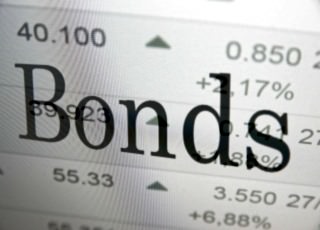Introduction to bonds

Bonds-imagine a family member asks you to loan them money. Perhaps they want to buy a new home and need a down payment or want to save their car from being repossessed. They promise to pay off the loan in two years and offer small interest payments every month until they do so.
What makes this arrangement different from most loans is that you collect those interest payments in addition to the full amount of money you provided to your relative.
There are two parties involved in bond market:
1. The Issuer: the corporation, government, federal agency or municipality issuing the bond. They are also known as the person in need of money.
2. The Investor: the person is buying bonds and securities to collect those interest payments. There are often many investors involved when a government or federal agency needs to raise large sums of money to get out of debt or fund programs.
Types of bonds
• Corporate issued: There’s more risk involved because a company is more likely to go bankrupt than a government, but the rewards are often greater as well.
• The Foreign government issued: Issued by a government out of the U.S. Risk level varies depending on the stability of the country.
• Mortgage-backed securities: Backed by mortgage loans, which are typically pooled to back one bond. There are other types of asset-backed bonds on the market.
• Municipal: Issued by city governments. You don’t have to pay federal tax on money earned, and most cities are low-risk investment opportunities.
• U.S. Securities: Issued by the U.S. government, often to raise money due to a national debt. Maturation is typically ten years or longer. Shorter maturation dates classify the investment as a note or bill rather than a bond.
Bond characteristics
How do you determine which bonds are ideal for your investment portfolio? How do you determine which ones carry too much risk for your comfort? You have to look at the following characteristics to make these important distinctions.
1. Face Value: Often referred to as “par value,” this refers to the amount of money being asked for in the bond. This is the total amount you will get back when the bond matures, and any interest payments earned are on top of the face value. In most cases, you’ll pay the face value of the bond to get into the investment.
2. Interest Rate: Often referred to as the “coupon” because coupons were once cashed in to receive interest payments. Today, this term refers to the interest that the investor will collect from the time of investment until the bond matures. Technically, this is the amount of profit gained before the face value is paid off to complete the investment.
3. Maturity Date: This is the date that the bond will mature, and the issuer will pay the face value to the investor. There are varying investment periods available on the bond market, ranging from one year to more than ten years until maturity.
Once you know these three characteristics, you can determine the risk factor for the bond and see where it fits into your investment portfolio. First consider the issuer and their means to fulfill the bond at the maturity date, and then consider the risk level. Shorter maturity dates are less risky, but you can earn more interest if you invest in bonds with a longer maturity period. Weigh the potential financial gains with the risk to determine whether it’s a wise investment for you or not.
Related articles
Investing In Stocks And Bonds
What are bonds investment
Why savings bonds are not the most exciting financial choice
Corporate bonds and who is buying?
Bond funds – your investing guide
Introduction to government bonds
Trading municipal bonds
Investing in treasury bonds
The bond market can help round out your portfolio